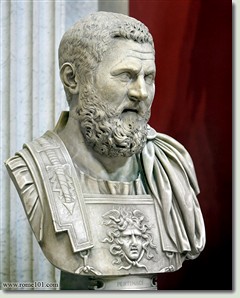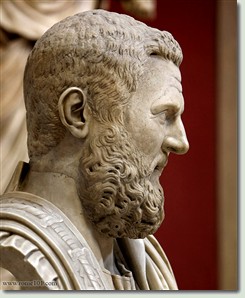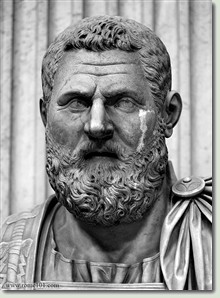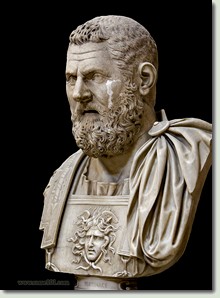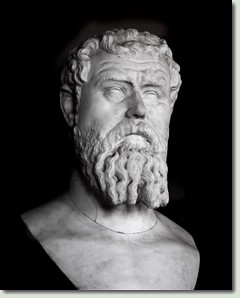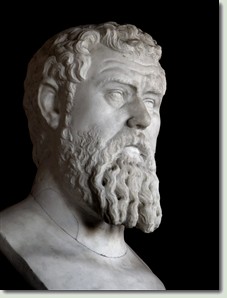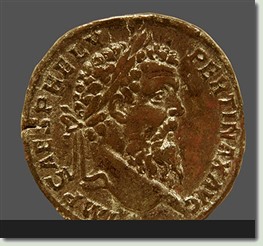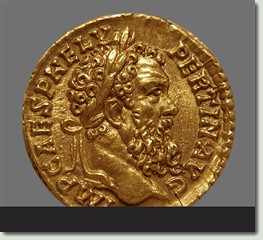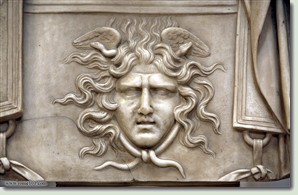| Portraits of Pertinax |
Pertinax was Preceded by
Commodus |
|
| Photos by Bill Storage and Laura Maish Email us about this page |
Colossal bust generally agreed to portray Pertinax, in the Vatican Pio-Clementine Museum, Round Room. Coins from the numismatic collections of Museo Nazionale Massimo and Museo Capitolino. Several noted scholars have rejected this identification, however, e.g., Georg Lippold in Die Skulpturen des Vaticanischen Museums (Berlin, W. de Gruyter, 1936). Numismatic evidence is problematic; coin images of Pertinax are similar to those of Clodius Albinus and Didius Julianus. Early 20th century scholars generally identified this bust as Macrinus. Indeed, the hair length and straightness are a better match for Macrinus than for Pertinax coin images. At least one art historian has challenged the entire authenticity of the piece. A bust of the same subject is in the Hatay Archaeological Museum, Antakya. Perhaps the strongest argument for identification of this portrait with Pertinax is its colossal size. Portraits of this size are generally associated with deification and this would exclude Macrinus, Albinus and Julianus. Helvius Publius Pertinax (August 1, 126 - March 28, 193), emperor for a three-month period in 193, was murdered by a mutinous group of soldiers when he attempted personally to quell a revolt. He was deified by his successor, Septimius Severus, who had also been instrumental in Pertinax's ascent to power. Coverage of Pertinax by primary sources is slim. He is described favorably by Dio Cassius in Roman History, and in Historia Augusta, which seems to have introduced some fictional elements. Pertinax, once a grammar teacher, chose a midlife career change that resulted in rapid advancement through military and civil positions, finally being appointed urban of the city of Rome by Commodus. He became emperor at age 66 and was well received by both senate and army. Poor Pertinax attempted to personally quell a mutiny involving a dispute on military pay and was stabbed to death. A concise account of the life of Pertinax by Michael L. Meckler is at De Imperatoribus Romanis. |
| Copyright 2008 Bill Storage and Laura Maish. Updated 8/29/2008 |
|
|
Keywords: Rome, Bill Storage, William Storage, Canon EOS, Canon 5D, 70-200mm f/2.8 IS, imperial portraits, emperor, imperial, Italy |
|
